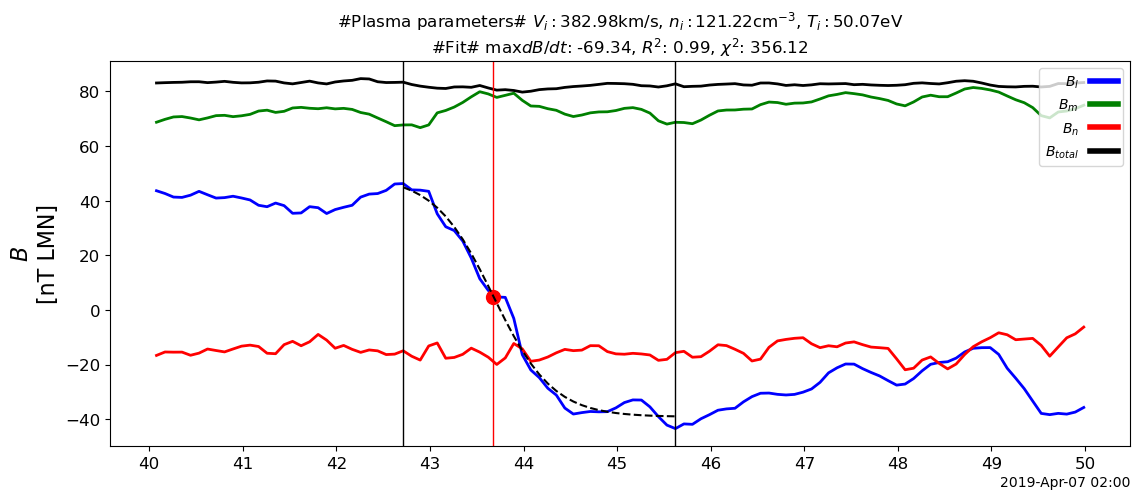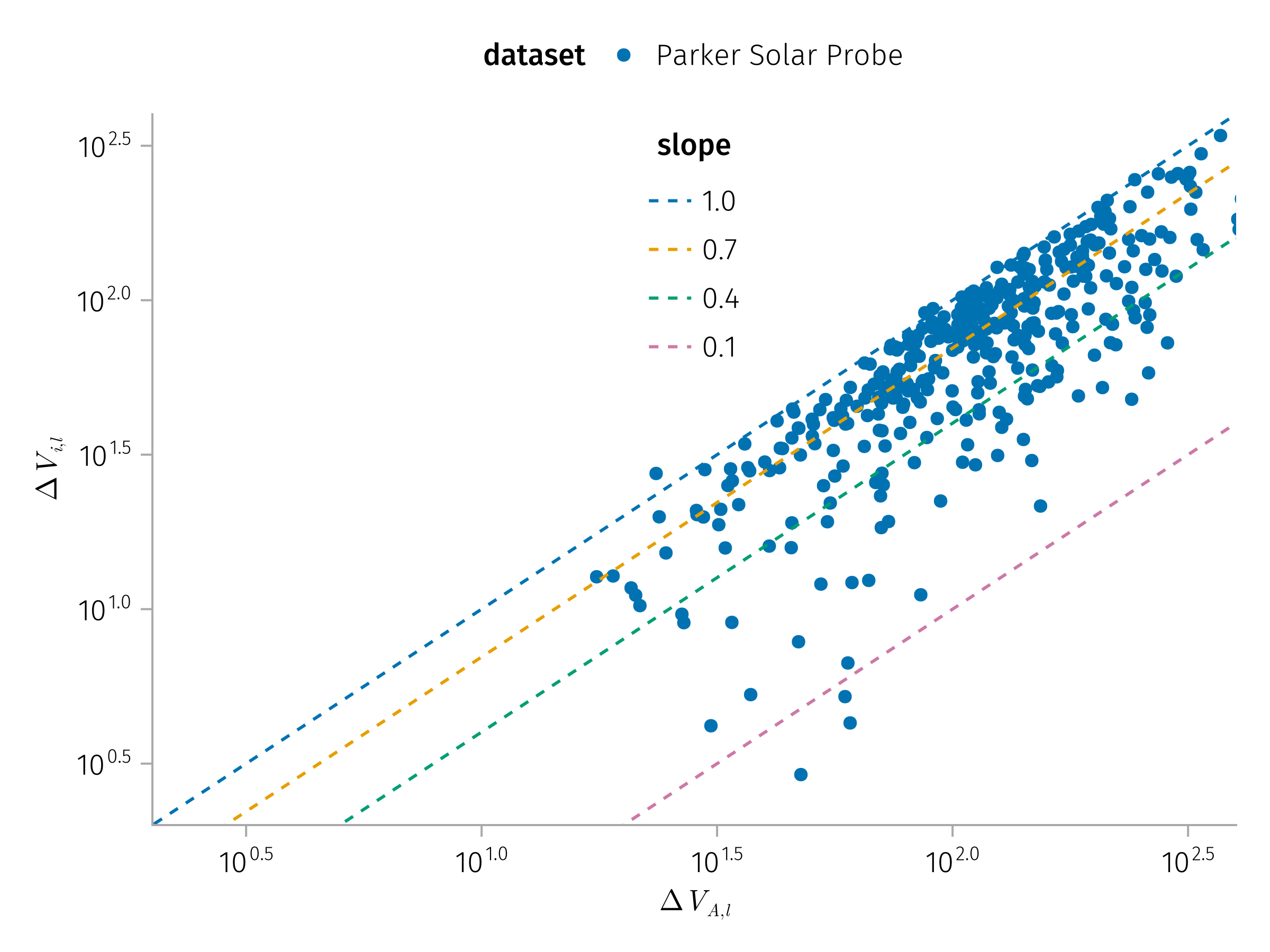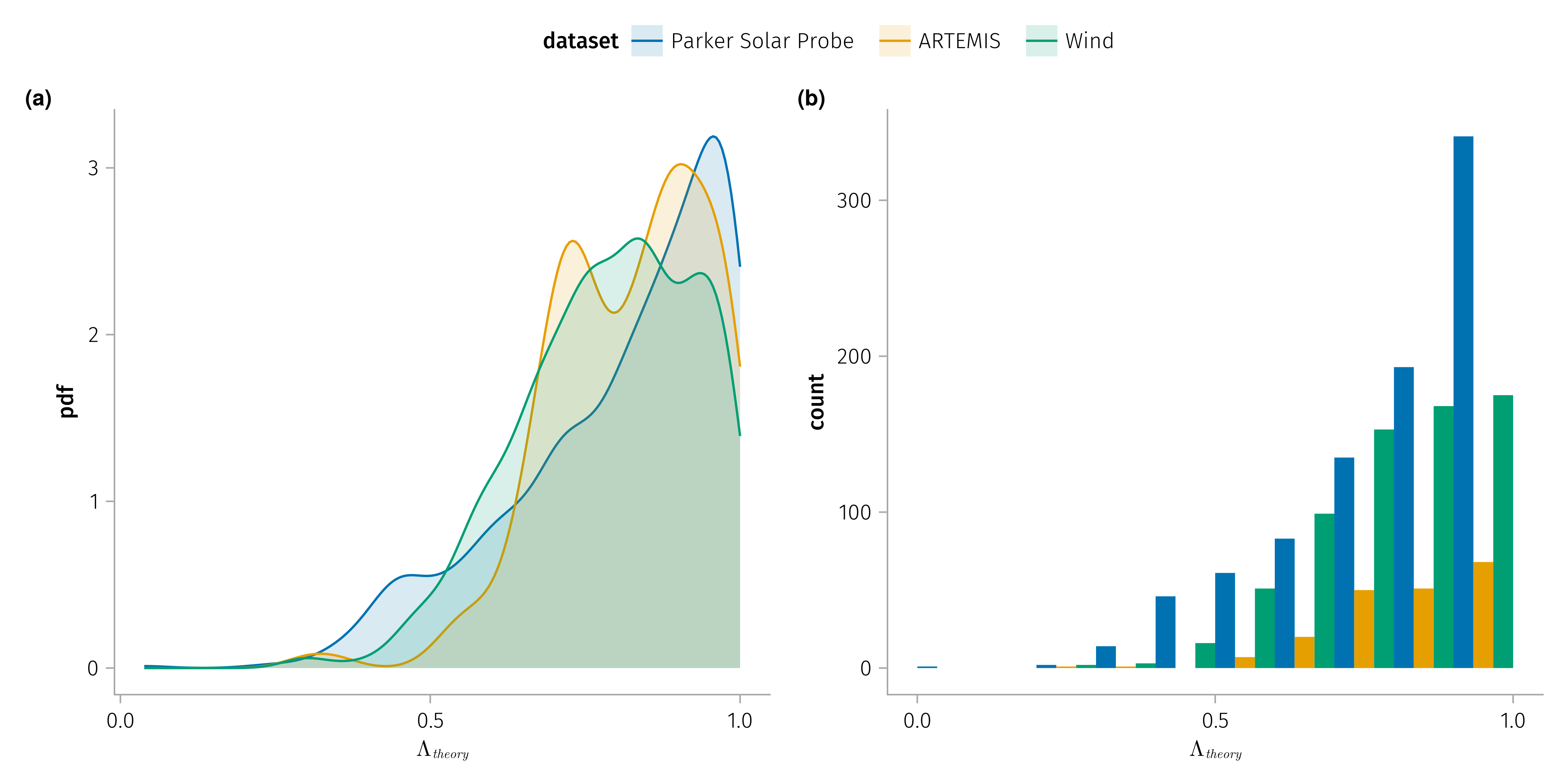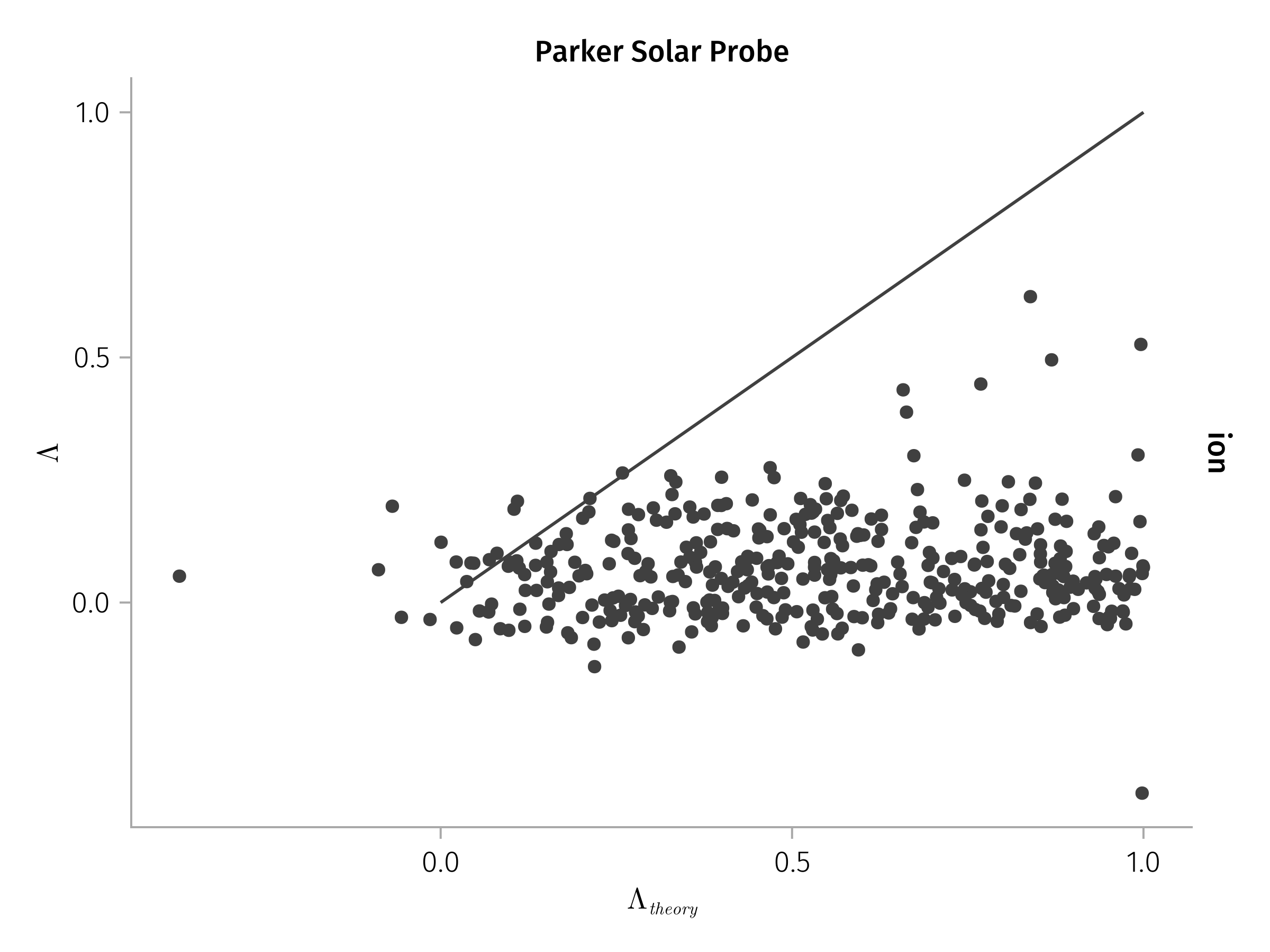Evolution of solar wind discontinuities in the inner heliosphere
PSP and Earth conjunctions and alignments
Plain Language Summary
Introduction
The study of the spatial evolution of solar wind discontinuities is important for understanding the dynamics of the solar wind
Previous statistical studies of solar wind discontinuities in the inner heliosphere Mariani, Bavassano, and Villante (1983) Liu et al. (2021)
Alignement study of solar wind discontinuities Artemyev et al. (2018)
By indentifying the periods of conjunctions and alignments between PSP and Earth-orbiting missions
Hudson (1970)
Dataset and method
TODO: define alignment / conjunction
Our study focuses on the evolution of solar wind discontinuities within plasma parcels as they undergo expansion. We analyze datasets from the Parker Solar Probe (PSP) and Earth-orbiting missions (e.g., ARTEMIS, DSCOVR, and Wind) at various radial distances in the inner heliosphere, during periods of conjunctions and alignments between PSP and these Earth-orbiting missions.
To achieve this, we utilize a configuration where two spacecraft are radially aligned in the Heliographic (HG) frame, with the longitude fixed on the Sun. It is important to note that the plasma parcels observed by the two spacecraft may differ in composition, as solar wind particles propagate at varying velocities. For instance, protons often exhibit a beam in their velocity distribution function, while the thermal speed of electrons is much higher than their bulk speed. Nonetheless, observing plasma that passes through both spacecraft offers the best opportunity to study the evolution of solar wind discontinuities with minimal influence from other processes during propagation. It is also expected that these plasma parcels evolve due to heating and other processes.
The plasma parcels in question are large-scale structures. As the scale size decreases below the mesoscale (Viall, DeForest, and Kepko 2021) (with radial sizes ranging from approximately 5 × 10³ km to 10⁷ km), it becomes increasingly unlikely to identify the same structure, depending on the latitude difference between the two spacecraft. Furthermore, although large-scale structures (especially density enhancements) can be identified as passing through both spacecraft (Berriot et al. 2024), it is nearly impossible to detect kinetic-scale structures, such as solar wind discontinuities (with time scales on the order of seconds), by both spacecraft simultaneously. Therefore, our study focuses on the statistical properties of solar wind discontinuities within the “same” large-scale structures that pass through both spacecraft.
After identifying the periods of conjunctions and alignments between PSP and Earth-orbiting missions, we apply the methodology described in [@???] to identify and characterize solar wind discontinuities. Generally, discontinuities observed by PSP are shorter (1-5 seconds) and exhibit higher current density. Consequently, we use different time windows for identifying discontinuities: 15 seconds for PSP and 30 seconds for Earth-orbiting missions. A example of the discontinuities observed by PSP is shown in Figure 1.
For this study
We utilized high-resolution magnetic field and plasma data from the FIELDS and SWEAP instruments aboard the Parker Solar Probe (PSP). For the plasma data presented in the figures of this paper, we used the dataset from SPAN-i, which measures ions in the solar wind. Although ion data is also available from SPC, the SPAN-i data was chosen due to its higher temporal resolution, making it more suitable for analyzing discontinuities. Our analysis confirms that the results obtained from SPC are consistent with those derived from SPAN-i data. It is also worth noting that sqtn data from the Radio Frequency Spectrometer (RFS) and Low-Frequency Receiver (LFR) for density measurements is available. However, we generally find that the results obtained from RFS/LFR do not differ significantly from those derived from SPAN-i data. Due to the limitations of SPAN-i data during the early mission phases, when a significant portion of the solar wind distributions was out of the instrument’s view, our study concentrates on data beginning with Encounter 7, where SPAN-i provides more accurate measurements.
We utilized data collected by ARTEMIS, including magnetic fields measured at approximately 5 Hz resolution by the Fluxgate Magnetometer (Auster et al. 2008), as well as plasma velocity (\(v\)) and density (\(n\)), which were derived from velocity distribution data obtained by the Electrostatic Analyzer with a resolution of around 4 seconds (McFadden et al. 2009). It is important to note that the ESA tends to overestimate proton temperature in the solar wind due to the narrower proton beam compared to the ESA’s energy and angular resolution. Therefore, any findings related to temperature anisotropy should be interpreted with caution.
The following data collected by Wind are used: magnetic fields with a \(\sim 11\) Hz resolution measured by the Magnetic Field Investigation (MFI) (Lepping et al. 1995), the ion (proton and alpha) moments measured by ion (PESA) electrostatic analyzers of the 3D Plasma Analyzer (3DP) (Lin et al. 1995).
Results
TODO: how does the results depend on the period selected for the conjunctions and alignments?
Comparison of Discontinuity Properties
Thickness and current density relationship Scale-dependent properties of current sheets in the solar wind
Vasko et al. (2022)
Comparison between Alfven speed and plasma speed change
For rotational discontinuities, the plasma velocity jump across them: the plasma flow velocity \(v_l\) (the solar wind velocity projected onto \(l\)) changes due to changes in \(B_l\), \(Δv_l=±Δv_A\) with \(v_A= B_l / \sqrt{4 n m}\).
K2: \(Δv_l\),l demonstrates a strong correlation with \(Δv_{A}\), albeit being consistently smaller.
Estimated Anisotropy
The equation for \(Δv_A\) includes a factor depending on the anisotropy of the plasma.
Pressure anisotropy \(Λ = \mu (P_∥ - P_⊥) / B^2\).
Comparison between Estimated and Observed Anisotropy
Discussion
- The properties of the discontinuities is related to the local plasma parameters
- Thickness => ion inertial length
- Current density => Alfven velocity (current density)
- Normalized thickness and current density of discontinuities remain constant with radial distance. In contrast to Artemyev et al. (2018) results that show a decrease in normalized thickness and increase in normalized current density with radial distance.
Assuming the Anisotropy of the plasma is expected to be larger near the sun to explain the observed speed change ratio \(Δv_i/Δv_A\).
Conclusion
References
Mariani, Bavassano, and Villante (1983)
- Statistical study of magnetic field discontinuities in the inner solar system
- ⭐️ Findings Strong day-to-day variations in occurrence rates of discontinuities
- ✏️ Morphology Orientation of discontinuities strongly organized by the average magnetic field
- 💡 Implications Interpretation of evidence of crossing of flux tubes



